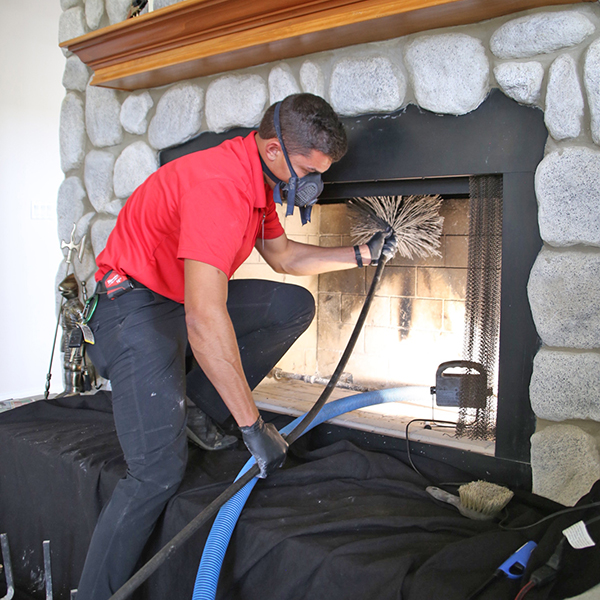Open the Tricks of Effective Chimney Maintenance San Jose for a Healthy And Balanced Home
Open the Tricks of Effective Chimney Maintenance San Jose for a Healthy And Balanced Home
Blog Article
Specialist Tips for Effective Chimney Upkeep You Required to Know
Chimneys offer as vital elements in numerous homes, providing heat and comfort. From the significance of normal examinations to risk-free operational techniques, a thorough technique to chimney upkeep is necessary.
Significance of Regular Examinations
Routine inspections of smokeshafts are important for guaranteeing their security and functionality. Smokeshafts play an essential duty in venting out harmful gases and preserving proper air flow in a home. Over time, creosote build-up, debris, and architectural damage can happen within the smokeshaft, positioning serious dangers such as chimney fires or carbon monoxide leaks.
Throughout a smokeshaft assessment, educated experts assess the condition of the chimney, seeking any indications of damages, obstructions, or wear and tear. They also examine the integrity of the flue, chimney lining, and smokeshaft cap to guarantee every little thing is in appropriate functioning order. By recognizing and dealing with problems early on, possible dangers or pricey repair work can be prevented.
Normal examinations not only help in maintaining the security of the chimney however additionally add to its total efficiency. A clean and well-kept chimney operates a lot more successfully, making certain correct air flow and lowering the threat of interior air contamination. Therefore, organizing yearly smokeshaft evaluations is a positive step that house owners can take to secure their property and loved ones.
Cleaning Techniques and Frequency
Preserving the safety and efficiency of a smokeshaft involves not just normal inspections yet additionally carrying out proper cleaning strategies and establishing the ideal frequency for cleansing. Chimneys should be cleansed by an expert chimney sweeper a minimum of yearly, also if they are not regularly utilized. If the chimney is made use of on a regular basis, especially with wood-burning cooktops or fireplaces, it might require more constant cleanings to protect against the buildup of creosote, a very flammable compound that can lead to smokeshaft fires.
The cleaning procedure generally entails removing creosote, residue, and particles from the chimney flue, smoke chamber, and firebox. Specialist chimney sweeper usage specialized brushes, devices, and vacuum cleaners to ensure complete cleaning without creating a mess in the home. Furthermore, they evaluate the chimney's structure for any type of indications of damages or wear that may need repair services. Homeowners ought to never disregard smokeshaft cleansing, as it is important for maintaining a functional and risk-free smokeshaft system - Chimney Maintenance San Jose. Routine cleansings not just lower the threat of smokeshaft fires but also improve the chimney's general performance and durability.
Dealing With Chimney Leaks

When addressing chimney leaks, complete inspection and punctual repair services are critical to protect against water damages and keep the architectural honesty of the smokeshaft. Leaks in a chimney can lead to major issues such as mold development, damage of the smokeshaft framework, and even potential fire hazards. To effectively resolve chimney leakages, begin by examining the chimney cap, crown, flashing, and stonework for any type of indications of damage or wear.
Recognizing Creosote Accumulation
To comprehend the potential hazards of creosote accumulation in chimneys, it is necessary to recognize its development procedure and influence on chimney efficiency. Creosote is a black or brownish tar-like material that collects inside chimney systems when timber or fossil fuels are burned. As smoke increases through the smokeshaft, it cools and condenses, resulting in the development of creosote, which sticks to the smokeshaft walls.

Normal smokeshaft assessments and cleansings by an expert chimney sweeper are important in stopping creosote accumulation and making sure the risk-free operation of your chimney system.
Safe Operation Practices
Carrying out proper security methods is important for the reliable and secure operation of chimney systems. Constantly make certain that the chimney is skillfully evaluated and cleaned on a regular basis to get rid of any creosote accumulation, which can lead to smokeshaft fires.
In addition, make sure to only shed skilled timber in your fireplace, as damp or environment-friendly timber can check this produce more creosote and trigger hazardous smokeshaft clogs. Never ever leave a fire neglected and always make certain the fire is completely extinguished prior to going to bed or leaving the house. By following these safe operation methods, you can take pleasure in a cozy and comfy fire while ensuring the safety of your home and loved ones.
Final Thought
In final thought, keeping your smokeshaft is important for guaranteeing its security and performance. Routine click for info examinations, appropriate cleansing methods, resolving leaks, taking care of creosote build-up, and complying with safe operation techniques are essential facets of chimney upkeep.
Over time, creosote buildup, debris, and structural damages can happen within the smokeshaft, posing significant risks such as chimney fires or carbon monoxide leakages.
If the smokeshaft is utilized consistently, particularly with wood-burning ovens or fireplaces, it may need even more frequent cleanings to stop the build-up of creosote, a highly flammable compound that can lead to smokeshaft fires. (Chimney Maintenance San Jose)
To understand the potential dangers of creosote accumulation in smokeshafts, it is important to identify its development procedure and impact on chimney efficiency. As smoke increases with the smokeshaft, it cools down and condenses, leading to the formation of creosote, which adheres to the chimney walls.
Always make sure that the smokeshaft is professionally inspected and cleaned up on a regular basis to get rid of any kind of creosote buildup, which can lead to chimney fires.
Report this page